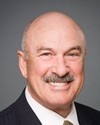Thank you for your question.
I'll go with the basic enhancement that the C-17 has brought to the CF and, of course, to Canada. What the C-17 embodies is the ability to respond quickly and effectively to either domestic situations or international situations, whereas in the past we had to pull together a different option package based on the tactical lift we had available, plus contracted lift, plus support from our allies. The C-17 has allowed us now to be able to initiate a response to any crisis on our own time and at our own speed, if you will. The airplane provides the range and the load capacity to pretty much take anything we need to bring to bear in any sort of situation. It can even carry our massive Leopard 2 tanks, which are pretty heavy vehicles. It's a platform that has opened up new doors for us, in being able to respond to our security needs. As you've seen in the last couple of years, it also has great potential for employment in the north, in the Arctic, in bringing to bear the capacity to bring outside cargo and personnel, whether CF or government agencies, that need to be in the Arctic for whatever reason.
We're also looking at its capabilities in the future. Up to now, we have used the C-17 mostly as a strategic platform to deliver those big payloads to Afghanistan and elsewhere. It's been used in the Arctic for re-supply. Clearly, the platform has potential that we have yet to explore and exploit. It can airdrop just about everything it carries. For domestic use, there is great potential for immediate reaction, and for bringing support and succour to those in need in Canada, through either landed or airdrop operations. So I think it holds great potential for us that we have yet to explore.
In the C-130 tactical fleets, the J model is, of course, a more robust and modern version of our very reliable C-130s. It brings with it greater load capacities. It's a slightly larger and faster aircraft that is more fuel efficient, with very reliable engines and systems, and, of course, it can be operated by very few individuals. So, from a resource perspective, it represents a far more manageable long-term sustainment bill for the air force to pay. It proved itself almost upon arrival. We took delivery of our first airplane only a year and a bit ago, and yet within a week or two from arrival, we were deploying it forward into Afghanistan because of the needs there. The airplane did wonderfully.
We have two platforms that have changed the game, and I see great things down the road for both platforms. We've seen them in action for the last two years and seen what they can bring to bear.




